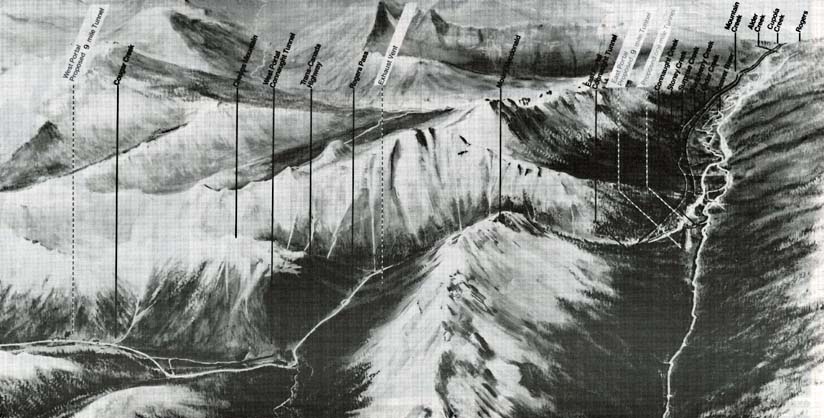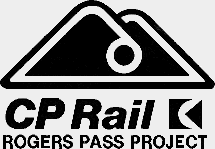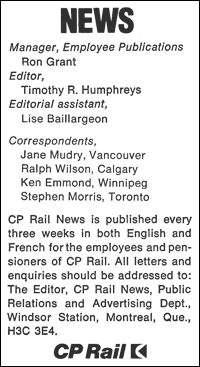|
|
Vol. 12
Number 6 May 5, 1982 |
 |


Detailed plans for the proposed 34 kilometre double tracking project through Rogers Pass have been presented to the Federal Environment Assessment Review Panel.
CP Rail's Chief Engineer John Fox outlined the plans at hearings held by the panel April 13-17 Apr 1982 in Vancouver, Revelstoke, Golden, and Calgary.
The plans detail the engineering and construction program for the $500 million project and also cover the railway's program of controls which are designed to mitigate any adverse environmental effects during construction and operation of the line.
The Rogers Pass project will include two tunnels, one of them 14.5 kilometres long through Mount MacDonald, 13 bridges, and 34 kilometres of new track.
In his remarks to the panel, Mr. Fox said the grade improvement project is of vital importance to the economy of Western Canada and work must begin this month to be completed by late 1986.
Between 1965 and 1980, the railway experienced significant increases in westbound traffic through Rogers Pass resulting from the emergence of Western Canada as a major supplier of coal, grain, sulphur, potash, and petrochemicals to major markets around the world.
With dramatic increases in this traffic being forecast for this decade, the producers of these and other commodities now undertaking plant expansion projects must be assured that railway capacity will be adequate to meet their transportation requirements, he explained.
To meet this predicted growth in traffic, timing of the Rogers Pass project is critical.
Winter construction cannot be done until construction forces are underground and the 1982 work program must start this month to allow completion before winter.
The work at the west portal of the 14.5 kilometres tunnel under Mount MacDonald is most critical in this regard since a delay at the portal would set back work on this main tunnel by a year. The surface work must also be completed this year to allow the project to proceed on schedule.

The 1982 work schedule includes:
- excavation of the east portal of the Rogers Pass tunnel;
- construction of the west portal of the Rogers Pass tunnel;
- clearing the surface route right-of-way and construction of access roads along the surface route;
- carrying out required geotechnical investigation;
- finalizing all engineering on the surface route.
Both CP Rail and Parks Canada recognize that rehabilitation of the work area through Glacier National Park is a major concern, said Mr. Fox, and final engineering will include environmental and reclamation features.
Mr. Fox explained that the route for the new line was selected because it offered both geotechnical and operational advantages, and because it could be built with the least disturbance to the environment.
A compilation of the existing environmental conditions and an assessment of effects of the Rogers Pass project on the environment began in 1978 and is continuing, he said.
A report was prepared to meet the federal guidelines for an Initial Environmental Evaluation and presented to the Canadian Transport Commission in December. In addition to meeting these requirements, winter wildlife studies were made.
Parks Canada personnel will be consulted in developing the reclamation design so that environmental concerns are incorporated into the planning and operational phases of the project.
Noting that the control of the construction operations is imperative to maintaining environmental quality, Mr. Fox said the railway will have a field co-ordinator of environmental protection and reclamation as part of the project's engineering staff.
 and is reprinted here with their permission.
All photographs, logos, and trademarks are the property of the Canadian Pacific Railway Company.
and is reprinted here with their permission.
All photographs, logos, and trademarks are the property of the Canadian Pacific Railway Company.Learn more about the Rogers Pass
Project in this article.
in this article.
